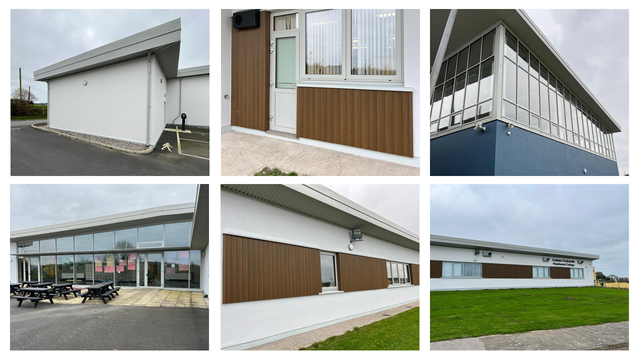David Flynn and Diarmuid Waters of Rogerson Reddan make the case for retrofitting the existing built environment as an effective way to meet decarbonisation goals
Sustainability talk is everywhere, and the conversation is especially acute for public agencies that are under strict obligations to decarbonise. Those based in older buildings may feel they have no choice but to abandon their existing sites in order to meet energy efficiency targets. In fact, many don’t realise that they can transform their current facilities or assets into complying with sustainability rules. In this post, we’ll explain why and offer some guidance based on our experience.
Since 2017, Rogerson Reddan’s Sustainability Team has managed a number of programmes covering over 130 existing buildings across the country, which includes more than 70 schools together with further 60 public buildings across 13 local authorities, delivering deep energy retrofits and decarbonisation projects, spanning programme management, procurement, project management and cost management.
Those years of experience have given us an insight into the benefits of decarbonisation. Instead of being fearful of obligations, we encourage public agencies to see opportunities. Meeting sustainability targets is a positive development that will improve their workplaces, enhance their ESG credentials, and create more welcoming environments for their employees, while also future-proofing the buildings themselves.
Now let’s address some common myths and misconceptions: firstly, there’s no need to abandon a building in place of a new greenfield site just because of decarbonisation. Medium or deep energy retrofits to bring existing buildings up to date are often a better option. New buildings are subject to the planning process which can lead to 5-7 year timeframes. By contrast, retrofits can be complete in less than 12-18 months for design, procurement and construction.

This graphic displays a range of measures that are available for projects on their path towards decarbonisation of energy systems.
| Project Details | Client & stakeholder team | Main contractor & Design Team |
|---|---|---|
| €7.5m deep energy retrofit on a live campus. | Limerick & Clare ETB | Dominic O’Connor Ltd |
| Programme July 2023 to December 2024. | Department of Education | Architect: O’Shea Leader Butler Consulting Engineers |
| SEAI | Mechanical & Electrical Engineers : EDC | |
| Rogerson Reddan | EED: Novus Energy | |
| PowerTherm |
There’s a lot of embodied carbon in existing buildings, so our belief is that it’s a better use of resources to preserve and upgrade them where possible. By way of an example, on a recent project in Limerick Prison, there was an old armoury building that was no longer in use and had collapsed on site. We were able to reclaim the stone from that building, refurbish and reuse it as part of a new aesthetic arch and window surrounds.
Secondly, refurbishment work doesn’t need to disrupt how your workplace operates today. We can offer upgrades in live buildings, without upsetting the day-to-day operation. We have often divided projects into phases, which avoids full or partial decanting. We regularly work with schools to reorganise their spaces so the teachers can continue to work without having to move people out to temporary accommodation, while freeing up space for contractors to work in specific parts of the building for certain time periods.
Thirdly, we have found that many building occupiers mistakenly assume their site is too old to be compatible with modern sustainable technologies such as heat pumps. In reality, older buildings often perform well in terms of energy conservation due to their solid construction and design. Many old buildings, for example, are heritage buildings even if they are not officially listed. With multiple years of experience in Decarbonisation, energy efficiency improvement projects across Schools, Higher Education & Local Authority facilities, where buildings from the early 1900s (listed, heritage or architecturally significant buildings ) had high fossil fuel consumption, after transitioning the building to electrical power, added to building fabric upgrades , fossil fuel usage were reduced to almost zero.
More recently, we are incorporating 3D modelling of buildings, which vastly accelerates project delivery. Using a 360-degree camera saves multiple visits to a site by a design team to capture a building’s full measurements. This takes months off the design stage when dealing with existing buildings. It’s highly accurate, reducing human error and lowering costs.
And cost is still a consideration in these projects, but our belief is that it doesn’t have to be. It’s true there is a significant capital outlay at the start, but this is about looking past short-term loss to make long-term gain in carbon reduction, improved energy efficiency and, over time, lower bills through better building control and energy consumption. Decarbonisation is not something for any organisation, public or private, to fear. The majority of clients are surprised when they review the whole life cycle cost analysis of decarbonisation and deep energy retrofit projects.

Hazelwood College, Limerick (post-retrofit)
Feel free to reach out to Diarmuid Waters and David Flynn at our Sustainability Team for a chat.
